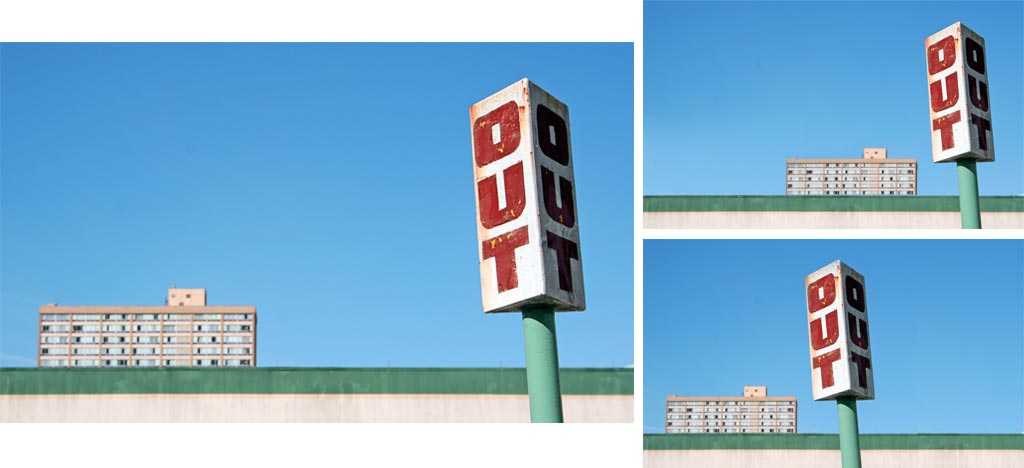Understanding Balance In Photography
Balance is a compositional technique in photography that juxtaposes images within a frame so that the objects are of equal visual weight. When different parts of a photo command your attention equally, perfect balance is achieved. In photography, there are two main techniques of balance you should be aware of: formal and informal. We’ll discuss the difference between each and how they can affect your photo.
Knowing how to effectively balance objects within a photo is a skill that all serious photographers must learn. The problem with improperly balanced photographs is that they are less appealing to look at and can instantly turn off a viewer.
Balancing elements in photography becomes important when you frame your shots. If you think back to the chapter on the rule of thirds, you’ll remember that we explained how placing the main subject of your photo off center can create a more dynamic photo. That’s because asymmetry makes a photo more appealing to a viewer because it causes visual tension.
The only problem with the rule of thirds is that it can also leave a wide open empty space in a photo which may make the scene feel empty. In some instances this may work very well for your image, but if it doesn’t you should try to balance the visual weight of your subject by including other objects to fill the empty space.
The two main techniques of using balance in photography are classified as formal and informal balance.
Formal Balance
Formal balance can be defined as symmetrical balance. In the previous chapter, we taught you how to achieve symmetrical balance in photography. All you have to do is frame the shot so that one or more identical or similar subjects are repeated symmetrical on each sides of a given point.
The photo below is a great example of formal balance. Notice how the egg is framed in the middle of the photo with an even amount of space around all sides. The colored triangle shapes on the table top also lends itself to using this type of balance. If this photo was framed differently (using the rule of thirds), with the egg positioned on one of the left or right side of the frame, it would most likely feel unbalanced because one half of the image would be completely empty.

Portraits can benefit greatly by using formal balance. Framing a subject in the middle of the frame for a portrait can help to reduce any visual distractions a background may contain. It’s always a safe bet to frame a portrait in this way. After capturing a standard shot such as this, you can then move on to other types of positioning for the model that are more visually interesting, but still being properly balanced. This can be achieved by using informal balance.

Informal Balance
Informal balance is a less obvious form of balance in photography and requires more attention. It’s a concept that can be difficult to be specific about because it can be achieved in a variety of ways. Simply put, informal balance occurs when dissimilar elements balance each other out on each side of the frame. The size of each element can be irrelevant, but more often than not it’s better to have a larger element juxtaposed with a smaller element or elements to make a good composition.
A well composed photo using informal balance is usually more appealing to look at compared to a formally balanced photo.
Perhaps the best way to learn about informal balance is by looking at several photo examples that effectively showcase it.

Notice how the photo above feels properly balanced while containing two subjects. The man’s position in the bottom left of the frame is counterbalanced perfectly by the sea creature (which is smaller in size) in the top right. If you try to imagine this photo with either one of these subjects removed, it would feel unbalanced. For example, if the sea creature was missing from the image it might feel too heavily weighted visually at the bottom of the frame with just the man looking at an empty space above. If this was the case, a center aligned formal balance might feel better to the eyes.

Above, is another great example of how two objects of varying size can be used to counterbalance each other within the frame. The OUT sign is tall and vertical, while the building is long and horizontal. Juxtaposing of size and direction perfectly complements each other. The positioning of both elements within the frame also provides proper balance for this photo. Notice, how in the alternate examples to the right, the photos feel unbalanced. If the building was centered in the frame, closer to the sign, a large empty space would remain on the left side of the frame, making it feel unbalanced. The same unbalanced feeling would occur if the sign was positioned in the middle of the frame, closer to the building, creating an empty space on the right of the frame.

Above is a final example of a photo using informal balance. The photographer positioned himself to place the juniper in the foreground and to the left side of the image, and the rock formation in the background and to the right side of the image. This framing effectively lends foreground interest and balance to the composition. If the juniper was left out of this photo, it might feel unbalanced to the viewer.
The Rule of Thirds Works Well with Informal Balance
If you didn’t notice already, each of the previous examples followed the rule of thirds. It’s important to keep this in mind when trying to create the best looking photos that utilize the informal balance technique.
Other Ways to Use Informal Balance
In the previous examples, we showed you how objects of different size can be used to counterbalance each other within a frame. While this is the most obvious way to use informal balance in photography, there are other ways.
Other methods you can use include:
Light against dark
A small area of white in a photo can be balanced by a larger area of black, and vice versus. Each one does not have to have the same intensity.
Colors
A small area of vibrant color can be balanced by a larger area of neutral color. Vibrant colors provide more intensity and therefore large neutral areas can be used to compensate for it.
Texture
Small areas with interesting textures in a photo can be balanced by larger areas of smooth, un-textured elements.
Leave a comment